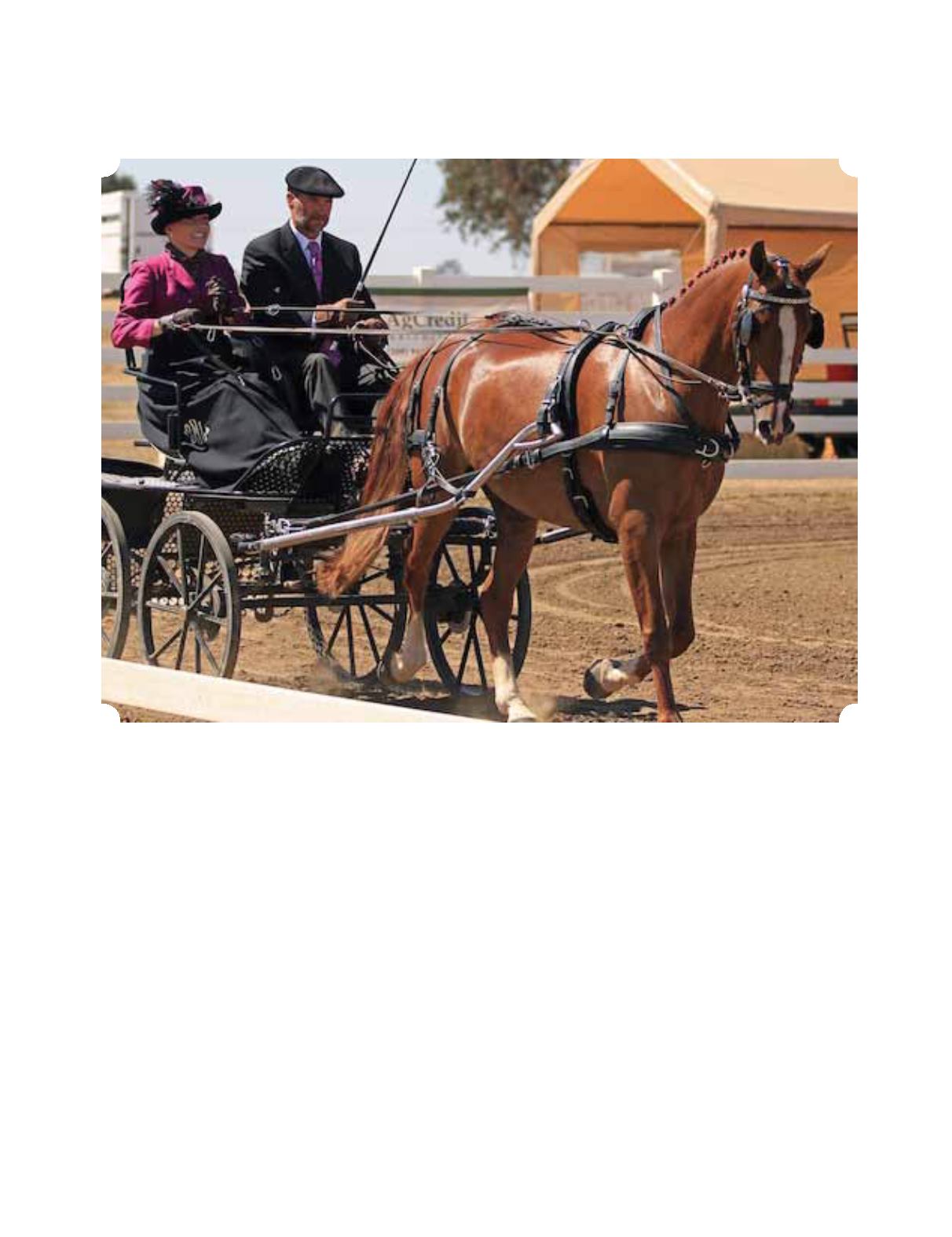
82 SIDELINES JANUARY 2014
FOR HORSE PEOPLE • ABOUT HORSE PEOPLE
By Lindsay McCall
In 1991, a car crash left Diane Kastama paralyzed from the waist
down. Although a lifelong horse person and dressage enthusiast,
riding without the use of her legs was not an easy task. As any
equestrian can identify with, Diane, of Arroyo Grande, California,
didn’t turn away from the sport she loved. Instead, she looked for
another outlet for her passion.
She began to compete in dressage driving and her talent
and ambition would push her into the high-performance sport
of combined driving. This led her to competing in multiple able-
bodied combined driving events. It was the discipline of para-
driving that encouraged her to embrace her disability and give the
international para-equestrian driving scene a force to be reckoned
with.
In 2012, Diane’s success earned her a spot on the United
States Para-Driving Team, alongside para-drivers Pam Johnson
and Karen Gorham. In August 2012, the team, coaches and
assistants traveled to the FEI World Para-Equestrian Driving
Championships in Breda, The Netherlands. While all the European
para-equestrian teams drove their own horses, the U.S. drivers
had to lease horses due to the lack of funding provided to the
U.S. Team to transport their own horses. The U.S. drivers had
only 10 days to learn about their leased horses prior to competing
in the World Championships. The United States Para-Driving
Team successfully competed over the dressage, cross-country
e
marathon with an obstacle course and cone driving against the
clock. The team placed fourth overall behind The Netherlands,
Germany and Great Britain. “Could you imagine where we would
have ended up with our own horses?” commented Diane.
The success of the U.S. para-equestrian driving team in
2012 is a direct reflection of the continued growth of the smaller
international equestrian disciplines. Diane noted, “Driving is a
very welcoming sport for physically disabled athletes. It allows
the para-equestrian to compete on equal footing with able-bodied
driving athletes. The sport is a great equalizer.”
Para-driving opens the doors to disabled athletes by allowing
them to get in the carriage and take control of their destiny. When
many disabled athletes find themselves unable to ride or they can
barely move from the pain in their joints, driving is still accessible.
There are quadriplegics driving with wrist cuffs and a quick release
seat belt. There are also drivers who were once show jumpers,
eventers or dressage riders. Driving is an equal opportunity sport
and with a few tweaks of equipment it is open to all.
For former show jumper Stefanie Putnam, of Lafayette,
California, para-driving has not only helped her physically, but
also emotionally and psychologically. After an accident that left
Stefanie as a quadriplegic, she was told she would never ride
again. Her love for horses, her family and the support of the United
States Driving for the Disabled organization gave her everything
she needed to heal from the inside out. Stefanie has noted that
Para-Equestrians Driving on the Scene
Stefanie Putnam
driving Avery in
dressage with Scott
Monroe.
Photo by Tom Muehleisen.
Continued on page 84


